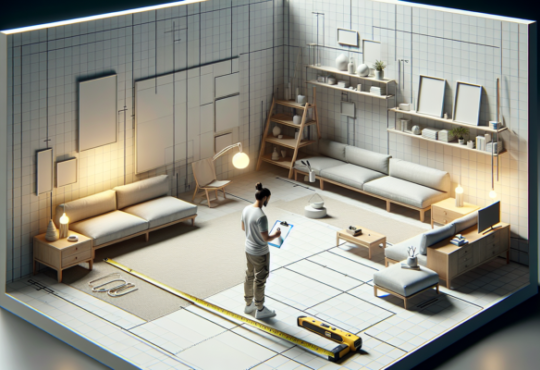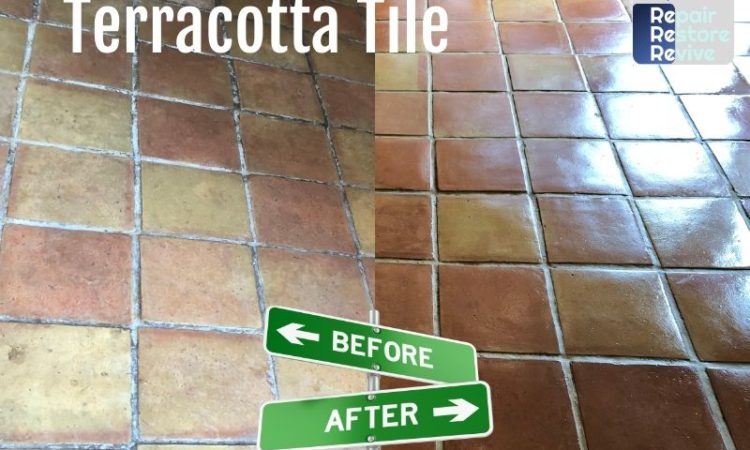Interior Lighting Ideas to Brighten Your Home
Choosing the right interior lighting for your home might appear straightforward at first glance.
However, stepping into a lighting showroom reveals thousands of options that can quickly become overwhelming.
To ensure you select fixtures that are functional and aesthetically pleasing, it’s crucial to understand your specific lighting needs. This knowledge will help you avoid errors that could lead to a space that doesn’t meet your intended purposes.
Maximize Your Space by Understanding Room Lighting Needs
Before diving into the selection process, take a moment to reflect on an essential question:
How will you utilize the space, and what activities will occur there?
Consider the various functions of the room throughout the day, allowing the lighting to adapt and enhance your activities.
For instance, living rooms often serve multiple purposes, so integrating various lighting options can help create a versatile environment where you can easily control brightness levels.
Grasping the fundamental types of lighting and knowing how to layer them effectively is paramount in achieving the best illumination for your home.
Essentially, you should focus on three primary types of lighting:
Ambient or General Lighting
Task Lighting
Accent Lighting
Understanding Ambient or General Lighting for Your Home
Ambient lighting refers to the overall illumination in a room, providing a foundation for visibility.
This type of lighting is essential for allowing you to navigate and see safely within a space.
Typically activated by the first light switch you engage upon entering, ambient light is what you leave on most frequently. This is also an ideal opportunity to utilize energy-efficient LED bulbs for sustainability.
Ambient lighting serves as the cornerstone of your interior illumination strategy.
While you can opt for individual fixtures like floor or table lamps, ambient light is generally generated through overhead features, including:
- Recessed lighting
- Track lighting
- Chandeliers
- Ceiling fans
- Area lights
When selecting bulbs for your space, prioritize lumens instead of watts.
Traditionally, bulbs measured brightness in watts, which actually gauges energy consumption rather than light output.
With the prevalence of energy-efficient options such as CFLs and LEDs, focusing on lumens provides a more accurate representation of brightness.
Selecting the Ideal Lighting Fixtures for Your Space
When it comes to suspended or pendant lighting, these fixtures are particularly suited for rooms with high ceilings or for placement over islands and dining areas.
Ensure that pendant lights hang no lower than 75cm (30 inches) from any countertop or table to prevent obstructions or blockages in your line of sight.
As you choose pendant lighting, remember to consider the overall size of your space.
For smaller areas, select compact and lightweight pendant lights to maintain an airy feel.
Conversely, larger rooms can accommodate more substantial and visually dramatic lighting pieces.
If additional light is necessary, don’t hesitate to incorporate supplementary light sources.
Understanding Lumen Output for General Lighting
In terms of general lighting, it’s perfectly acceptable to opt for bulbs with a lower lumen output.
Unlike task lighting or accent lighting, the brightness required for general lighting doesn’t need to be as intense or focused.
Consult your electrician for assistance in calculating the appropriate lumen output needed for your specific room.
In some cases, a single light fixture may suffice if paired with the right bulb.
You can enhance your lighting by adding more fixtures or opting for recessed downlights to ensure a consistent spread of ambient lighting.
If considering recessed lighting, a good rule of thumb is to install approximately one fixture for every 4 square feet of ceiling space.
Enhancing Functionality with Task Lighting
Think about scenarios where you need additional light to perform specific tasks.
Whether it’s reading in bed, prepping food in the kitchen, engaging in crafts, or applying makeup in the bathroom, the right lighting is essential.
Task lighting is designed to illuminate specific activities.
This localized lighting can emerge from various sources, including spotlights, recessed fixtures, desk lamps, and table lamps.
Essential Tips for Effective Task Lighting
While brightness is important, it should not flood the entire room with light.
Look for adjustable options. Choose fixtures and lamps that can be dimmed or install dimmer switches, as well as positionable fixtures like movable arms that can be adjusted as needed.
The Impact of Light Color on Your Space
Opt for warmer bulbs when reading, especially in the evening. In contrast, cooler bulbs work best around mirrors in bathrooms, offering a realistic daylight effect to ensure your makeup looks flawless in natural light.
Placement is crucial. Desk and table lamps should be adjustable and directed downward to focus the light on the task without shining directly into your eyes. They should ideally be positioned to the side of your workspace to prevent glare and minimize shadows.
Using Accent Lighting to Highlight Features
Strategic Uses of Accent Lighting
To draw attention to artwork or plants
To highlight architectural features
As decorative lighting
Accent lighting, also referred to as directional lighting, is intended to create a focal point within a space.
It’s typically used to emphasize a specific feature, such as an art piece or a decorative plant, or to highlight architectural elements like wall textures or decorative coving.
Effective accent lighting directs the eye to the desired feature while remaining inconspicuous itself.
Commonly achieved through spotlights, wall sconces, or recessed fixtures, accent lighting should ideally provide at least three times more light to the focal point than to the surrounding area.
When incorporating accent lighting, prioritize aesthetic appeal over functional lighting.
Remember the Importance of Natural Light.
Your room may be flooded with natural light during the day, leading you to underestimate the amount of ambient light required during nighttime.
Incorporate dimmers to enhance flexibility in your room’s lighting arrangement.
Creating a Well-Lit Kitchen Environment
The kitchen serves as the heart of most homes, where families gather and create memories.
This multifunctional space requires a variety of lighting types to accommodate its diverse uses.
A typical mistake in kitchen lighting design is relying on a single light fixture or track lighting, which often results in uneven light distribution, creating glare and shadows on work surfaces.
To optimize functionality, your kitchen needs flexible lighting solutions with strategically placed fixtures for effective use both day and night.
Task and accent lighting can supplement natural light during the daytime and provide general illumination during the evening.
Since kitchen lights are frequently left on longer than in other rooms, consider upgrading to energy-efficient bulbs like CFLs or LEDs. These options emit less heat, making them ideal for under-cabinet and other task-oriented lighting.
Task lighting ensures focused illumination in critical work areas.
In the kitchen, task lighting should illuminate:
- Countertops
- Islands
- Sinks
- Stovetops
- Inside cabinets and drawers
- Under-cabinet lighting
Utilizing Under-Cabinet Lighting for Task Efficiency
Under-cabinet lighting serves as an effective means of providing task illumination, ensuring light is directed exactly where it’s most needed without casting shadows.
Many surfaces, such as granite and marble, reflect light, so it’s important to choose under-cabinet fixtures that diffuse light to minimize glare, like LED strips positioned toward the wall.
Incorporating Suspended Lighting in Your Kitchen
Pendant lights can serve both decorative and functional purposes in the kitchen.
These fixtures provide ambient light that disperses in all directions, and when positioned correctly, they can also act as stylish task lighting over areas such as your kitchen island or sink.
Making the Most of Recessed Lighting
Recessed lighting works wonders for spaces with low ceilings. If you opt for this style, ensure the fixtures are positioned near the cabinets to create an effective overhead light layer for work areas.
If recessed lights are set back too far from cabinets, they can create unwanted shadows on your countertops.
Position lights approximately 60cms from the walls to ensure the light beam’s center directs onto the edge of the countertop.
Accent Lighting for Kitchen Features
Accent lighting in the kitchen can be used to showcase features like wall art or unique elements on your countertop, such as plants or decorative bowls.
There are numerous methods to incorporate accent lighting into your kitchen:
Consider using LED light strips under cupboards or baseboard lighting for subtle effect.
If your kitchen features high ceilings, pendant lights or wall sconces above the sink can effectively provide both accent and task lighting.
Creating a Cozy and Inviting Living Room
The living room serves as a gathering place for family members, making it essential to create a warm and inviting atmosphere.
Often one of the first rooms guests encounter, proper lighting is critical to achieving a balance between functionality and aesthetics.
The lighting setup should support the various activities you engage in while using the space.
If your living room includes a TV, avoid placing ceiling lights directly above or in front of the screen.
Instead, utilize dimmable accent lighting that can be easily adjusted or turned off, as bright lights can create glare and hinder visibility during darker scenes.
Inspiring Ambient Light Ideas for Your Living Room
Consider using a prominent ceiling fixture, such as an elegant chandelier or pendant light. If incorporating multiple light sources, ensure they are evenly distributed to prevent overly bright areas and harsh shadows.
Opaque lampshades and frosted glass diffusers can also help to create a balanced lighting effect throughout the room.
For social gatherings, proper ambient lighting is crucial. Opt for warm-toned, dimmable bulbs to foster an inviting environment that encourages conversation and relaxation among guests.
Implementing Effective Task Lighting
Task lighting is designed to create focused, bright light, allowing you to see details clearly while providing relief for your eyes.
For avid readers or those engaged in crafts, the right lighting is essential to focus on activities without straining your eyes.
Lamps with adjustable brightness and positioning are the most effective sources of task lighting.
Lamps that offer dimming capabilities or three-level brightness options are particularly useful.
Strategically place task lights at desks, work tables, or beside your favorite reading chair to maximize functionality.
Highlighting Your Living Room with Accent Lighting
Accent lighting adds visual interest and highlights significant features within your living room.
Use it to draw attention to artwork, architectural elements, or decorative details such as textures and molding.
Illuminating Cabinets and Shelves for Display
Lighting open shelves or cabinets is a fantastic way to showcase items you wish to display, such as china, glassware, or decorative pieces.
Consider using fairy lights or LED strips within display cases and on bookshelves to subtly illuminate collections, or wrap fairy lights around houseplants to create soft pockets of light, enhancing the overall ambiance.
To effectively plan your home’s lighting, reach out to a qualified electrician who specializes in lighting design and is enthusiastic about creating the ideal lighting scheme.
The Article Interior Lighting Options For Your Home was found on https://limitsofstrategy.com
The post Interior Lighting Options For Your Home appeared first on https://alef3.com











